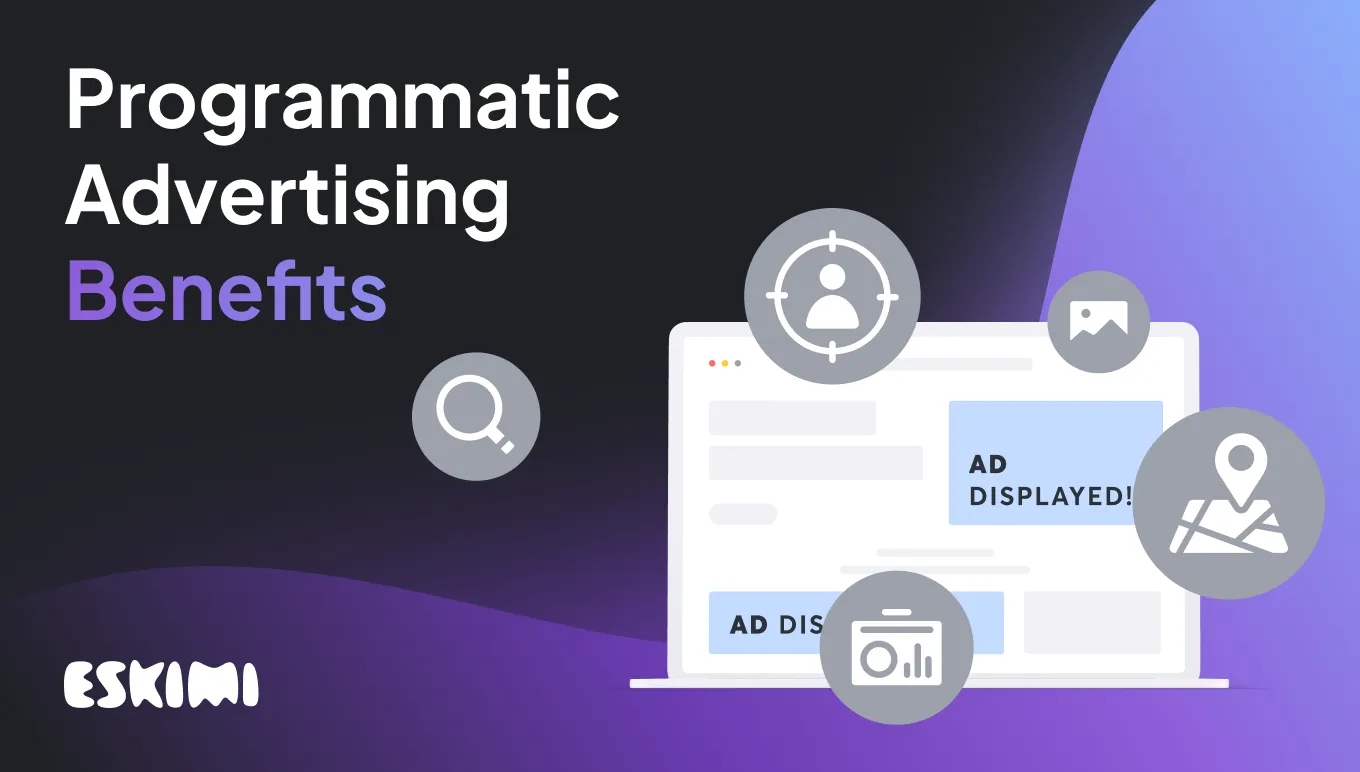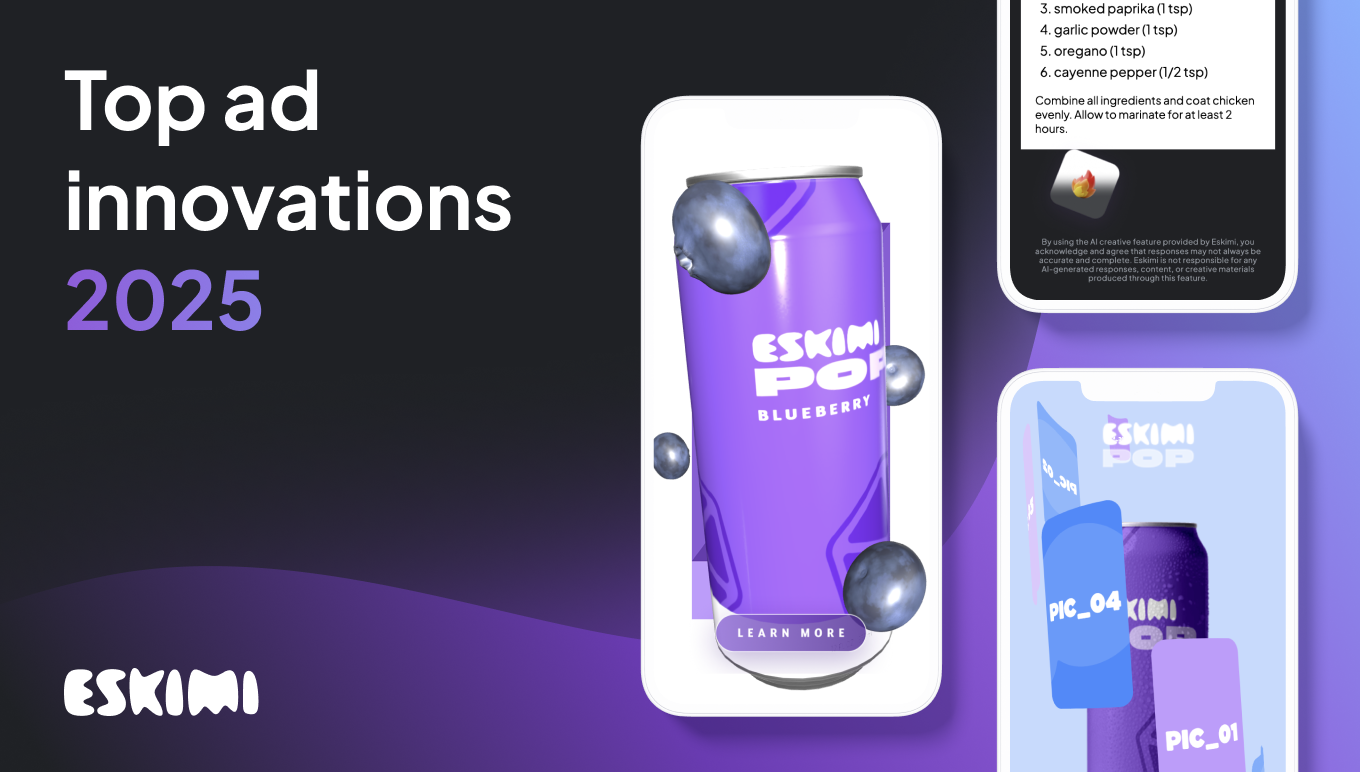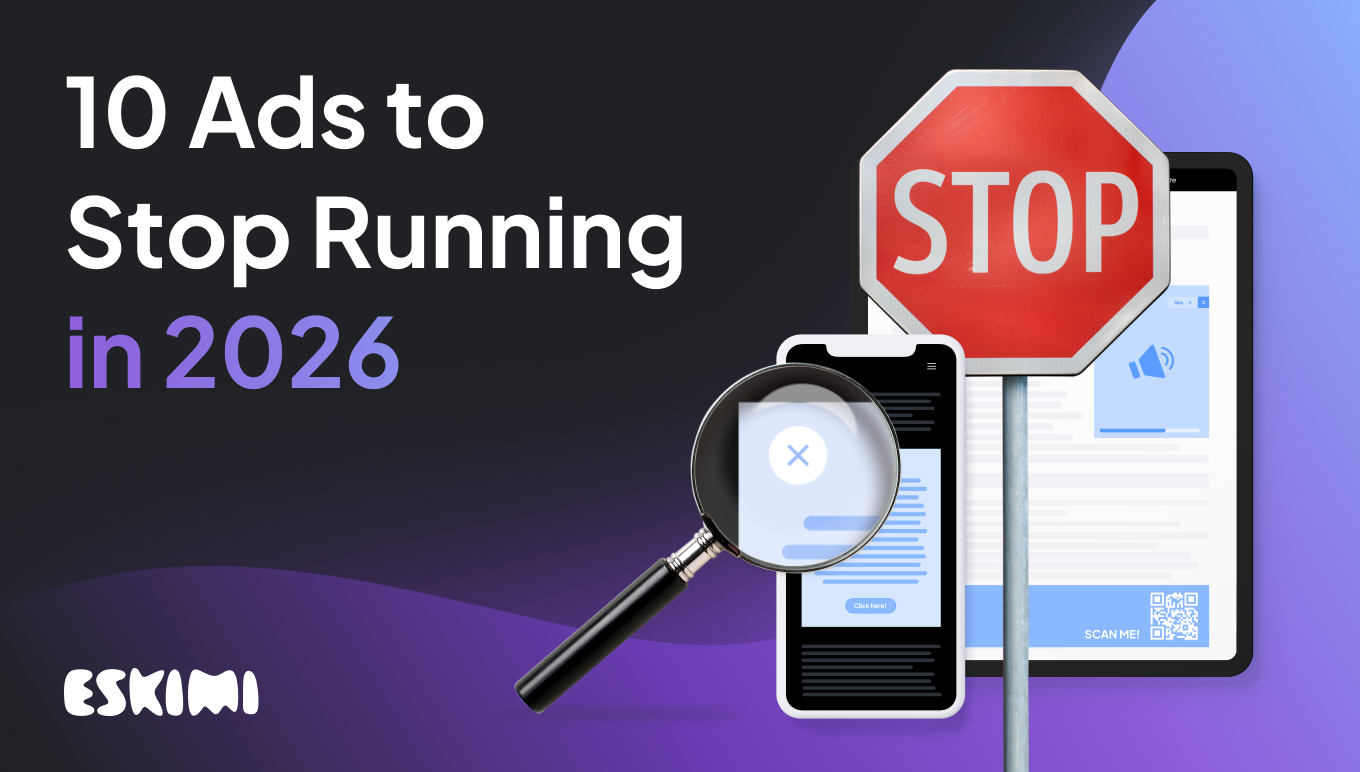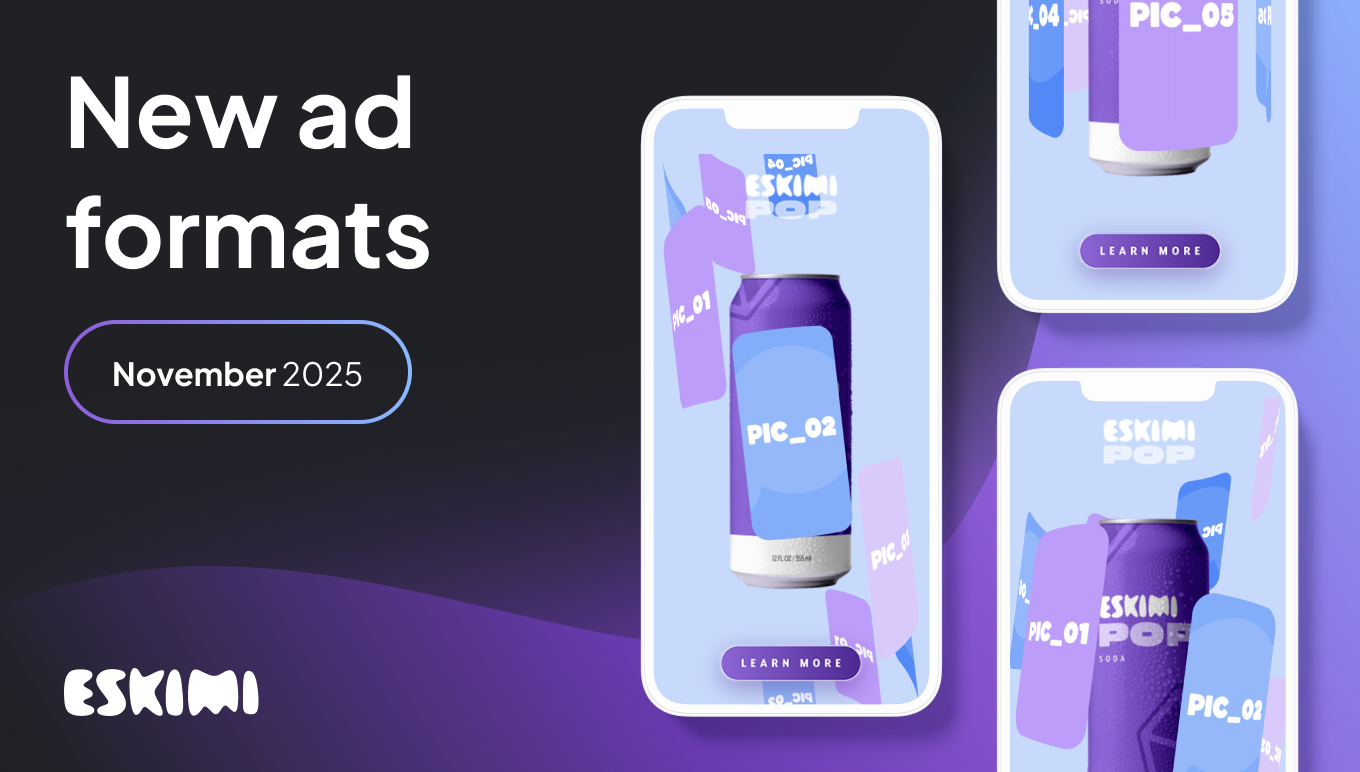7 Programmatic Advertising Benefits You Need To Know

Many digital marketers are starting to see programmatic advertising as an essential component of their advertising mix. Some are still wondering whether or not it's worth investing in.
If you’re one of the latter and still on edge about making your final decision, you’ve come to the right place.
In this post, you’ll get a brief overview of key things you need to know about programmatic advertising and go through a list of benefits it can bring to any company – when used right.
What is programmatic advertising?
Programmatic advertising is a process of buying (and selling) digital advertising space.
As opposed to more traditional ways of media buying that often include manual methods, programmatic uses automated technology, large sets of data, and algorithmic tools.
Although automation is the key focus of this term, it’s important to note that programmatic advertising still requires human touch (preparing necessary documents for smooth campaign execution, like Insertion Order or ad tags), it still frees up their schedules and gives more time for optimizing and improving ad campaigns.
How does it work?

Programmatic advertising involves using programmatic platforms, such as DSP and SSP, that allow advertisers and publishers to connect and buy/sell ad slots in a fraction of a second.
Depending on the programmatic advertising type, this process can (slightly) differ.
- Real-time bidding (RTB or Open RTB). RTB describes media buying via open auction in real-time. This auction is open to all advertisers; therefore, hundreds of buyers compete for the same ad slots. The final cost is determined by demand, and the ad placement is sold to the highest bidder.
- Private Marketplace (PMP). PMP deals also work on an auction basis, however, as opposed to Open RTB, advertisers can access it only with an invitation from publishers.
- Programmatic guaranteed. Programmatic guaranteed is a form of programmatic direct advertising that requires direct communication between the advertiser and publisher. Programmatic guaranteed doesn’t involve auctions; instead, both sides agree on a fixed price and specific inventory and are obliged to fulfill the agreement.
- Preferred deals. Just like programmatic guaranteed, PD also falls under the umbrella of programmatic direct. The only difference is that with preferred deals, it’s not obligatory for the advertiser to buy pre-agreed ad space. Although they still agree on all the details in advance, the advertiser gets a priority to bid on the agreed placements but still has the right not to buy. If denied, the deal automatically goes to oRTB or PMP.
Programmatic advertising benefits for advertisers
Increased workflow efficiency, more time for optimization, and better focus are among the biggest advantages that programmatic advertising can offer advertisers.
Let’s dive deeper into some other key reasons why adding programmatic into your advertising mix just… makes sense.
1. Better audience targeting

When it comes to programmatic advertising benefits, targeting features are probably the one that is highlighted a lot, as it comes at a level that’s not that easy to find within other forms of marketing.
And let’s admit, this is an important one as you often have goals that go beyond just being visible to anyone, anywhere.
Based on their goals, advertisers can precisely select the target criteria in order to reach their ideal customers.
For example:
- Demographics – age, gender, location.
- Behavioral – interests, visited locations, geofencing areas, socio-economic class targeting.
- Contextual – targeting keywords and URLs (placing ads in a relevant context).
- Retargeting – advertising to users who have already shown interest in products/services.
When bidding on ad placements, DSPs “take these criteria into consideration” and ensure that ads are delivered to the right people at the right time.
2. Broader reach
Depending on specific audience goals and targeting combinations, programmatic offers advertisers to reach people on tons of different websites and apps. Combined, that’s a huge audience. And we’re talking about millions of people here (potentially – this can vary from DSP to DSP).
Showing your ads on multiple sites/apps at the same time with little to no effort can not only significantly improve your brand visibility online but also contribute to the overall effectiveness and efficiency of your advertising efforts.
3. Real-time data
Imagine a world where you can track the performance of your advertising campaign as soon as it’s launched… With programmatic advertising, you don’t have to, as it’s another aspect that makes it beneficial to advertisers.
Put simply, the number of impressions, clicks, and websites your ads appear on can be tracked in real time, and you don’t need to wait until the end of the campaign to evaluate its performance.
Besides the live analysis of your campaigns, with programmatic you can also optimize them while they're still running, making adjustments where necessary and positively impacting the end result.
4. Increased transparency

You learn something new with each campaign, and the biggest part of this process is the performance data you can get. The more information you have, the better decisions you can make in the future and hopefully outdo your past campaigns.
Transparency in reporting is another programmatic advertising benefit that can offer you total visibility over your campaigns and dozens of valuable insights, like:
- Exact sites where your ads appear
- Audiences that you reach
- Costs associated with the ad space
- Etc.
Having all this in place can help advertisers to see what works and what doesn’t, allowing them to plan better, fix what needs to be fixed, and improve.
5. Flexible spending and budget management
Flexible spending is one of the reasons why programmatic advertising is suitable for companies of any size. It allows advertisers to control how much they spend on their campaigns, reducing the chances of paying more than planned/they are able to afford.
More specifically, when starting your programmatic campaign, you can set the maximum budget and launch your ads without worrying that it will cost more than you can or want to pay.
Moreover, detailed reporting allows you to analyze when your ads perform best and with what settings, which can help you decide when it’s the most beneficial to show your ads regarding their price and performance.
6. Higher ROI of ad campaigns
You’ve probably heard that running programmatic campaigns can increase your return on investment (ROI), but were not sure how exactly this happens.
Put simply, it all comes down to not spending money on showing ads to people who are not interested in seeing them at all. Or in other words, creating more effective campaigns with smaller budgets.
Targeting options and their combinations can be endless, and that’s why it’s sometimes difficult to know what will work best (therefore, you pour more money into the budget). Programmatic tools can do this math and are smart enough to put your ads in front of the right people.
Moreover, it can offer lower prices than buying ads directly, as it’s usually done on an auction basis. Publishers often struggle to sell all available ad slots, therefore, put free space on auction where the price is determined by demand and is usually lower as a result.
7. Variety of creative ad formats

Last but not least, with programmatic advertising you can engage users using a variety of different ad formats. Of course, static banners are still a classic solution, but then you also have all these creative rich media opportunities that you can use in your programmatic campaigns.
For example:
- Dynamic ads – ads that automatically change content based on some specific criteria and API integration, e.g., weather conditions.
- Video ads – advertising through videos.
- Sticky ads – ads that stay at fixed positions on the user’s screen while they scroll the page.
- Floating ads – ads that “float” on top of content on the user's screen.
- Gamification ads – interactive ads that allow users to play a simple game.
Rich media typically performs better than static banners as it’s a more engaging format that invites website visitors/app users to interact with the ad, improving overall campaign results.
Reap the benefits of programmatic ad campaigns
When consumers are getting more demanding and banner blindness becomes a common issue in the industry, there’s no better time to hop on the programmatic train and take advantage of all its benefits.
With programmatic, businesses of all sizes can efficiently and effectively target their audiences within the set budget, and use the time they save to save to optimize campaigns for even better results.
Want to get started with programmatic advertising? Contact the Eskimi team or book a demo for a quick tour of the platform.
Level Up Your Advertising with Eskimi
- Reach 96% of Open Web
- 2,500+ Targeting Options
- 100% Managed or Self-Service
- In-House Creative Studio Team
- Display, Video, In-Game & CTV
- #1 Rated DSP on G2





